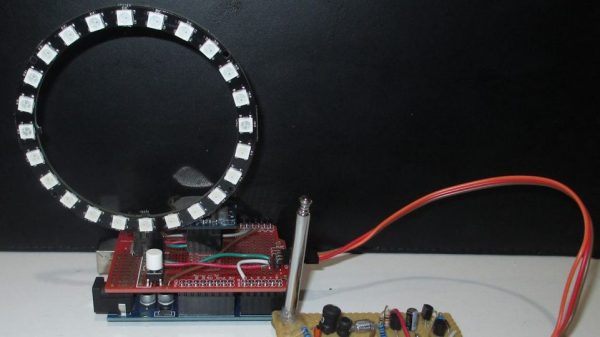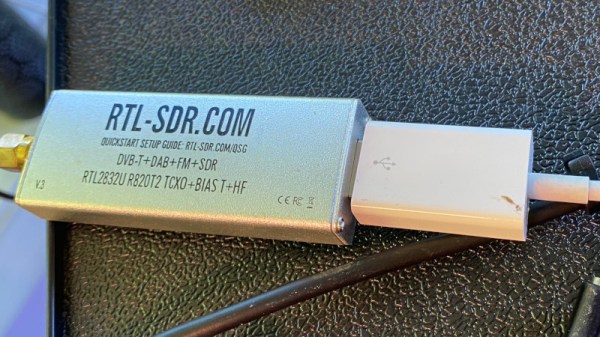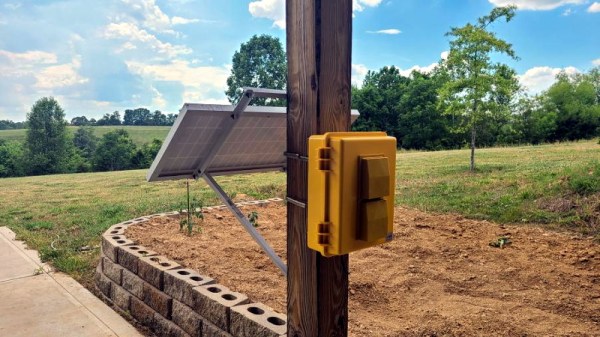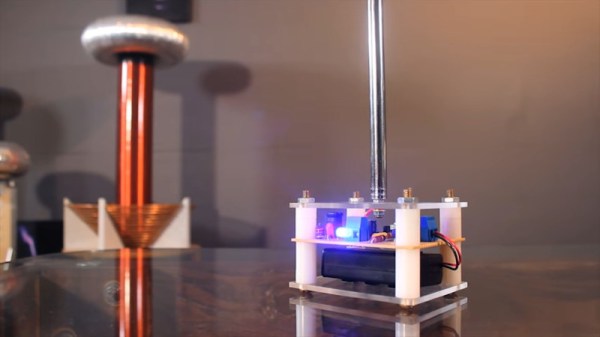Lightning is one of the great forces of nature. The huge releases of electricity release detectable electromagnetic emissions, as you might expect. The team at the [LVL1 Hackerspace] put together a lightning detector of their own; one which keeps count of the number of discharges in the atmosphere.
The device consists of a typical tank circuit tuned to 300kHz, paired with a small telescopic antenna. Lightning strikes in the area induce an oscillation in the circuit which is amplified and then detected by an Arduino. The Arduino measures the voltage of the pulse, which is proportional to the magnitude of the signal detected. A ring of Neopixel LEDs are then switched on relative to the intensity of the signal. Additionally, when not actively detecting strikes, the Arduino instead uses the LEDs to display the current time and a binary count of the number of strikes detected since it has been running.
It’s a simple build, and one that would serve as a great introduction into the world of addressable LEDs and environmental monitoring. If you’d like to go about it another way, you can detect lightning with an SDR, too!



















